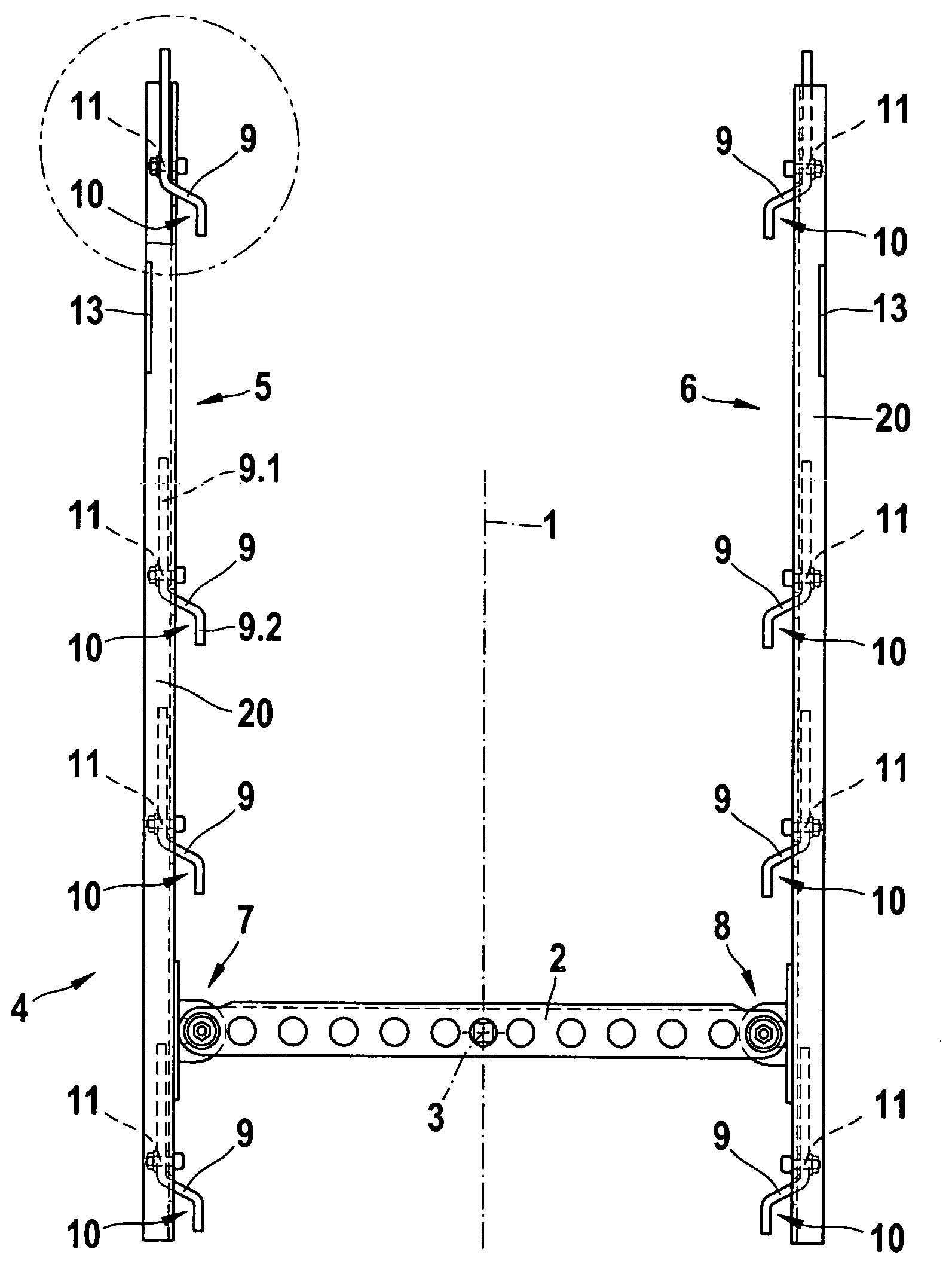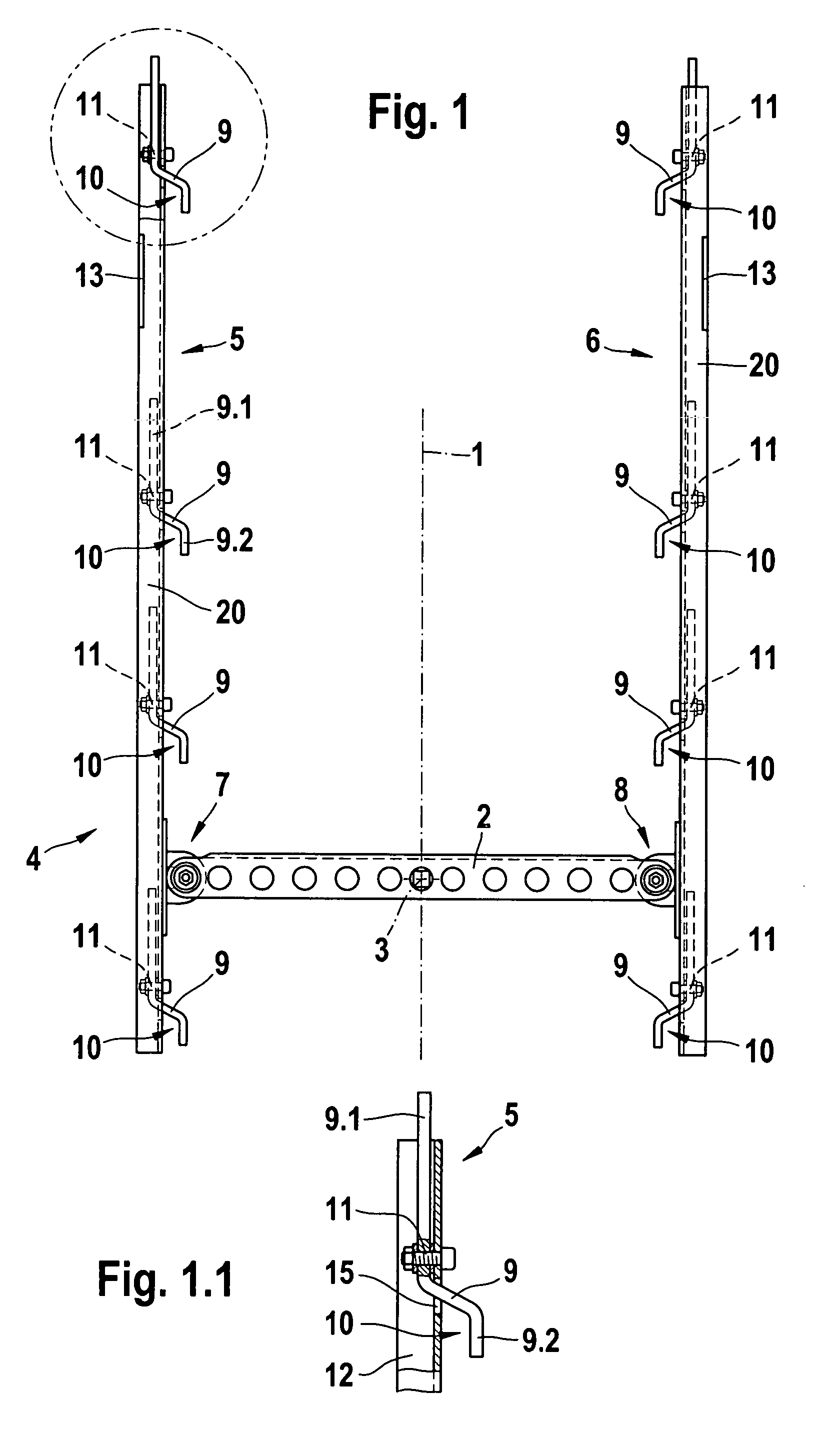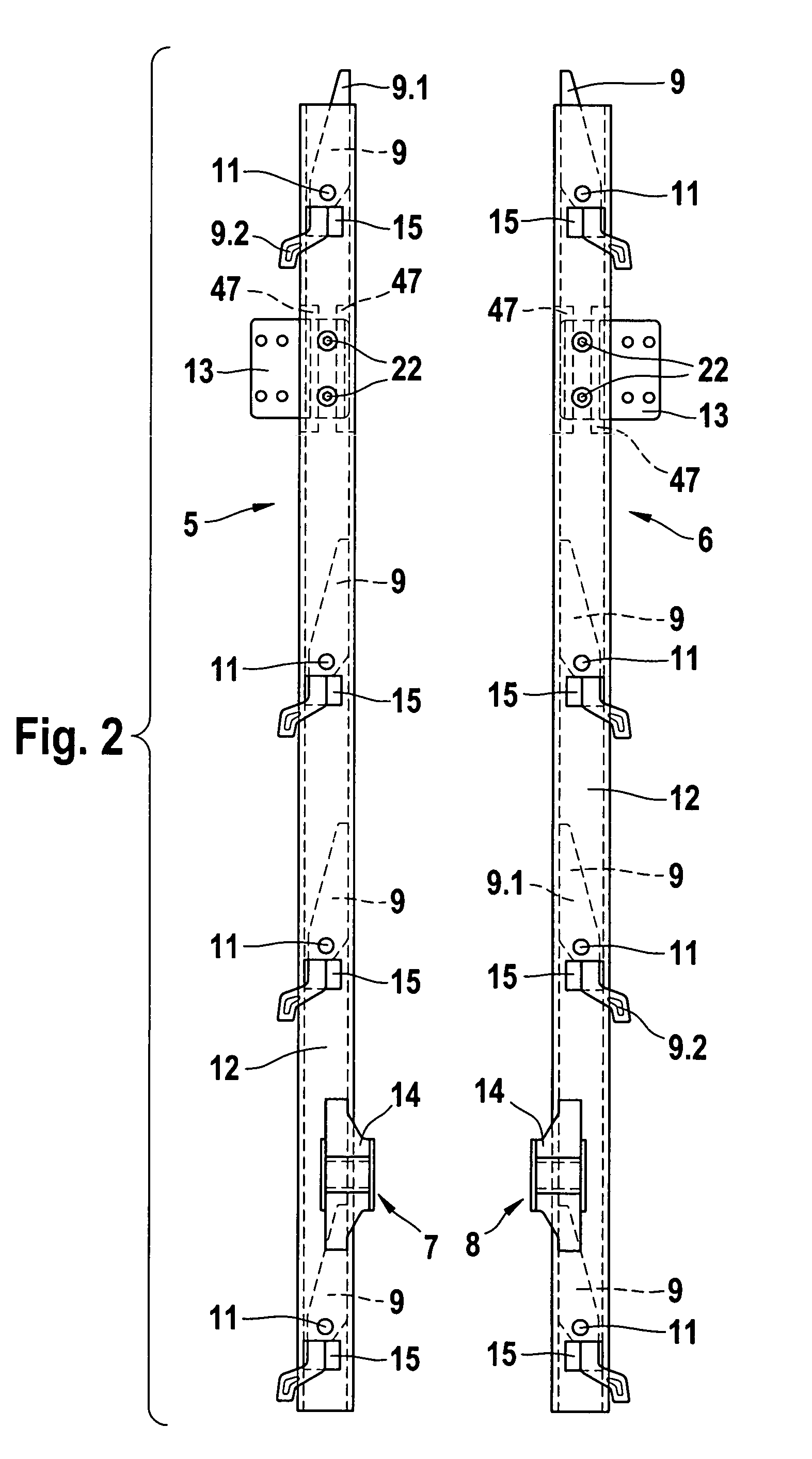Straight-through dishwasher with a carriage which is driven in opposite directions
a dishwasher and carriage technology, applied in the field of straight-through dishwashers, can solve the problems of poorer washing result, unfavorable washing results, and uneven transportation of carrier racks, and achieve the effect of reducing the quantity of clean water, reducing the heating output needed, and improving the washing
- Summary
- Abstract
- Description
- Claims
- Application Information
AI Technical Summary
Benefits of technology
Problems solved by technology
Method used
Image
Examples
Embodiment Construction
[0026]The illustration according to FIG. 1 shows the plan view of a transporting element which is designed in the manner of a carriage and is intended for transporting racks through a straight-through dishwasher.
[0027]A transporting frame 4 is constructed symmetrically in relation to an axis of symmetry 1 and comprises a first transporting rail 5 and a second transporting rail 6. The two transporting rails 5, 6 are coupled to one another in an articulated manner via a pivoting arm 2. The pivoting arm 2 can be pivoted about a pivot pin 3 via a drive which is not illustrated in FIG. 1. By virtue of the pivoting movement introduced into the pivoting arm 2 via the pivot pin 3, the first transporting rail 5 and the second transporting rail 6 of the transporting frame 4 are moved in the manner of a parallelogram, e.g. in opposite directions to one another, in the plane of the drawing. The first transporting rail 5 and the second transporting rail 6 are coupled in an articulated manner via...
PUM
 Login to View More
Login to View More Abstract
Description
Claims
Application Information
 Login to View More
Login to View More - R&D
- Intellectual Property
- Life Sciences
- Materials
- Tech Scout
- Unparalleled Data Quality
- Higher Quality Content
- 60% Fewer Hallucinations
Browse by: Latest US Patents, China's latest patents, Technical Efficacy Thesaurus, Application Domain, Technology Topic, Popular Technical Reports.
© 2025 PatSnap. All rights reserved.Legal|Privacy policy|Modern Slavery Act Transparency Statement|Sitemap|About US| Contact US: help@patsnap.com



